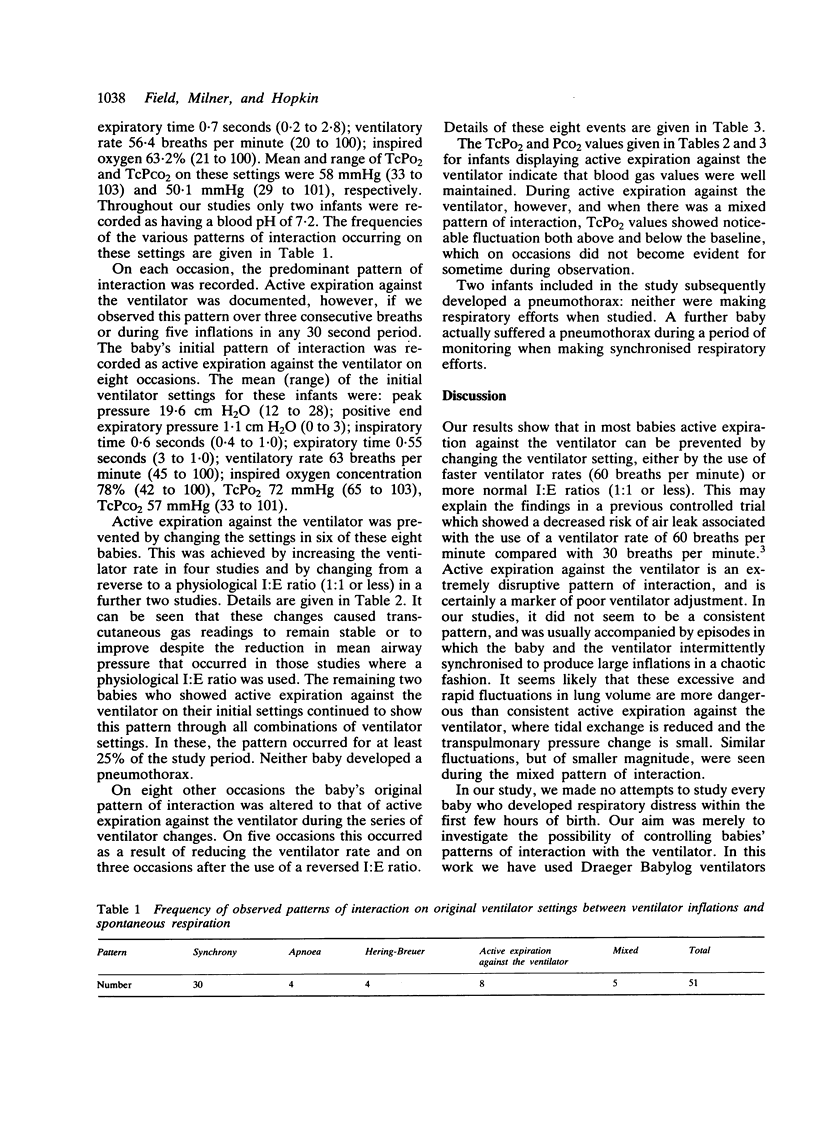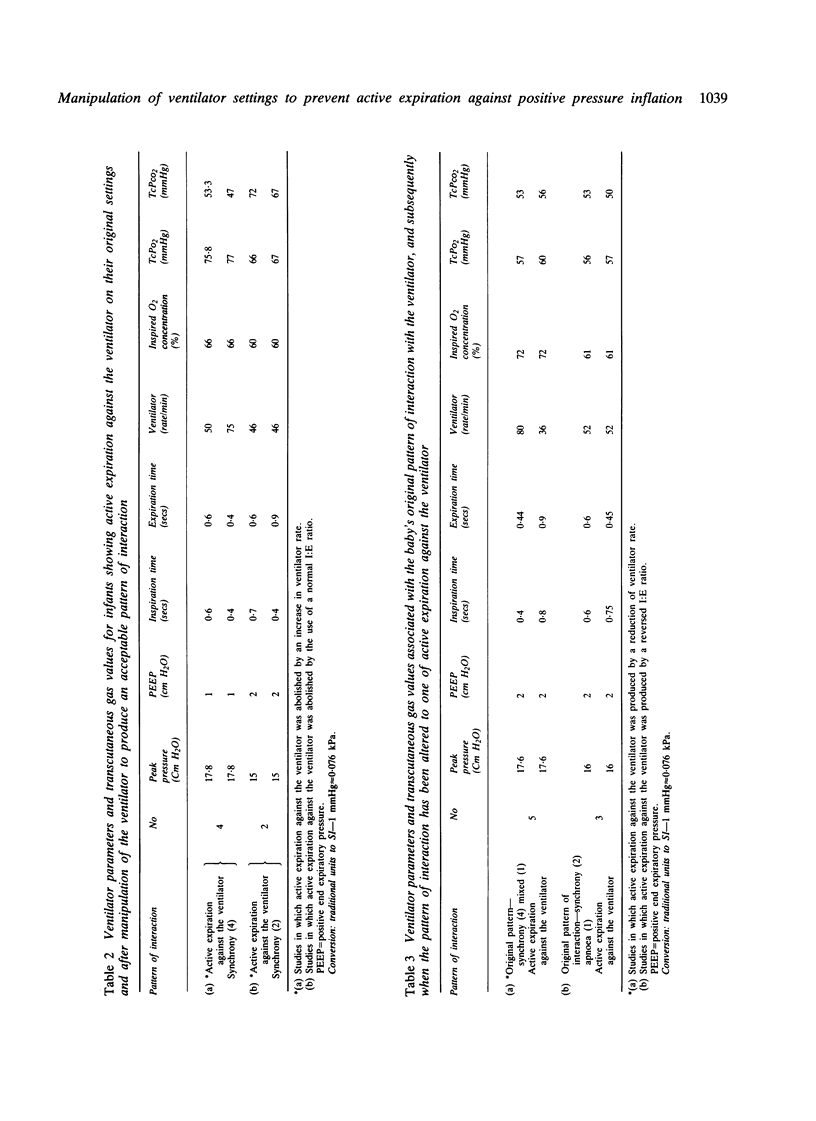Abstract
Recent publications have suggested that in infants receiving artificial ventilatory support a particular pattern of interaction between spontaneous breaths and ventilator inflations (active expiration against each ventilator inflation) may be important in the production of pneumothoraces. We have looked at patterns of interaction from 47 preterm infants studied on 51 occasions. We found that active expiration against the ventilator occurred on a total of 16 occasions. This pattern was prevented on 14 occasions by altering the ventilator settings. In two other babies, the pattern persisted but neither baby developed a pneumothorax.
Full text
PDF




Selected References
These references are in PubMed. This may not be the complete list of references from this article.
- Field D., Milner A. D., Hopkin I. E. Calculation of mean airway pressure during neonatal intermittent positive pressure ventilation and high frequency positive pressure ventilation. Pediatr Pulmonol. 1985 May-Jun;1(3):141–144. doi: 10.1002/ppul.1950010304. [DOI] [PubMed] [Google Scholar]
- Field D., Milner A. D., Hopkin I. E. Inspiratory time and tidal volume during intermittent positive pressure ventilation. Arch Dis Child. 1985 Mar;60(3):259–261. doi: 10.1136/adc.60.3.259. [DOI] [PMC free article] [PubMed] [Google Scholar]
- Greenough A., Morley C., Davis J. Interaction of spontaneous respiration with artificial ventilation in preterm babies. J Pediatr. 1983 Nov;103(5):769–773. doi: 10.1016/s0022-3476(83)80483-1. [DOI] [PubMed] [Google Scholar]
- Greenough A., Wood S., Morley C. J., Davis J. A. Pancuronium prevents pneumothoraces in ventilated premature babies who actively expire against positive pressure inflation. Lancet. 1984 Jan 7;1(8367):1–3. doi: 10.1016/s0140-6736(84)90177-6. [DOI] [PubMed] [Google Scholar]
- Heicher D. A., Kasting D. S., Harrod J. R. Prospective clinical comparison of two methods for mechanical ventilation of neonates: rapid rate and short inspiratory time versus slow rate and long inspiratory time. J Pediatr. 1981 Jun;98(6):957–961. doi: 10.1016/s0022-3476(81)80604-x. [DOI] [PubMed] [Google Scholar]


